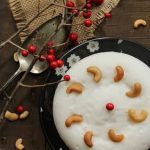Are you looking to add a sweet and creative touch to your baked creations? Learn how to make candy cake decorations and take your cake decorating skills to the next level. Candy cake decorations are not only visually appealing, but they also add a delicious element to your cakes that will delight both kids and adults alike.
In this article, we will explore the basics of candy cake decorations, including the different types of candies and their uses. You’ll also discover the essential tools and materials needed for creating beautiful candy cake decorations. Whether you’re a beginner or a seasoned baker, our step-by-step guide will walk you through creating simple candy cake decorations, as well as more advanced techniques for those looking to explore intricate designs.
But that’s not all – our expert tips and tricks will help you perfect your candy cake decorations, while our creative ideas will inspire you to think outside the box when using candy in cake decorating. So, get ready to embrace the fun and delicious art of candy cake decorations.
The Basics of Candy Cake Decorations
When it comes to making candy cake decorations, it’s important to understand the different types of candies and how they can be used to add a sweet and delightful touch to your cakes. From gummy bears and chocolate chips to sprinkles and candy melts, the possibilities are endless. Each type of candy has its unique characteristics that make it suitable for various decorating techniques.
Hard Candies
Hard candies like lollipops, rock candy, and Jolly Ranchers can be used to create beautiful designs on top of cakes. They can be crushed into small pieces or melted down and poured into molds to create colorful and eye-catching shapes.
Gummy Candies
Gummy candies such as gummy bears, worms, and fruit slices are perfect for adding a chewy texture to your cake decorations. They can be sliced, shaped, or even used whole to create fun and playful designs on cakes.
Chocolate Candies
Chocolate candies like M&Ms, chocolate chips, and Hershey’s kisses are popular choices for cake decorations due to their delicious flavor and versatility. They can be used as toppings, melted down for drizzling or dipping, or even molded into intricate shapes using candy molds.
Understanding the different types of candies and their properties will help you choose the best options for your desired cake decoration design. Whether you’re aiming for a colorful and whimsical look or an elegant and luxurious style, there’s a perfect candy waiting to elevate your cake decorations.
Tools and Materials
When it comes to making candy cake decorations, having the right tools and materials is essential for creating beautiful and delicious designs. Whether you are a beginner or an experienced baker, there are a few key items that you will need to successfully make candy cake decorations.
One of the most important tools for candy cake decorations is a good quality set of pastry bags and tips. These will allow you to pipe melted chocolate or icing onto your cakes in a precise and controlled manner, creating intricate designs and patterns. Additionally, having a selection of food-safe paint brushes can be useful for applying edible glitter or luster dust to your candy decorations.
In terms of materials, it’s important to have a variety of different types of candies on hand. Hard candies, gummies, chocolate pieces, and sprinkles can all be used to create different textures and visual effects on your cakes. It’s also helpful to have some basic molding tools such as silicone molds or cookie cutters to shape your candies into specific forms before placing them on the cake.
As with any form of baking or decorating, having a clean and organized workspace is crucial. Make sure to have a designated area for working with your candy decorations, as well as plenty of parchment paper or non-stick mats to lay out your creations as they dry. With the right tools and materials at your disposal, creating stunning candy cake decorations can be both enjoyable and rewarding.
Step-by-Step Guide
Creating simple candy cake decorations can add a touch of fun and sweetness to any cake. Whether you’re a beginner or just looking for some easy ideas, there are a variety of ways to incorporate candy into your cake decorating. Here’s a step-by-step guide on how to create simple candy cake decorations:
1. Choose your candies: Select a variety of candies in different colors, shapes, and sizes that will complement the theme and style of your cake. Some popular choices for simple decorations include gummy candies, jelly beans, chocolate chips, and sprinkles.
2. Prep your work area: Before you begin decorating your cake with candy, make sure you have a clean and organized work area. Lay out all your tools and materials, such as frosting, piping bags, and any additional decorating items you may need.
3. Start decorating: Once you have your candies and work area ready, it’s time to start decorating. Use frosting as glue to adhere the candies to the cake in various patterns or designs. You can create borders around the edges of the cake, make polka dot patterns, or even spell out words using letter-shaped candies.
4. Add final touches: After placing the candies on the cake, take a step back and assess if there are any final touches needed. This could include adding some colorful sprinkles for extra flair or dusting edible glitter over the top for an extra sparkle.
5. Display and enjoy: Once you’ve completed your simple candy cake decorations, carefully place your finished creation on display for all to admire. Then slice up the delicious masterpiece and enjoy with friends and family.
Remember that creating simple candy cake decorations is all about having fun and being creative with your designs. Don’t be afraid to experiment with different types of candies and patterns to see what works best for your unique creation.
Advanced Techniques
When it comes to candy cake decorations, there are endless possibilities for creating intricate and stunning designs. One advanced technique is the use of sugar work, which involves melting and molding sugar to create delicate shapes and designs. This can include spun sugar, pulled sugar, or blown sugar, all of which add an elegant touch to any cake.
Another advanced technique is the art of making marzipan figures and sculptures. Marzipan is a sweet almond paste that can be molded and shaped into various forms such as flowers, fruits, or even miniature animals. These edible works of art can add a whimsical and artistic flair to your cake decorations.
For those looking to take their candy cake decorations to the next level, the use of chocolate tempering is an essential skill. Tempering chocolate involves melting and cooling it in a precise manner to ensure a glossy finish and smooth texture. With tempered chocolate, you can create intricate chocolate curls, shavings, or delicate chocolate flowers to adorn your cakes.
| Advanced Technique | Description |
|---|---|
| Sugar Work | Melting and molding sugar to create delicate shapes and designs such as spun sugar, pulled sugar, or blown sugar. |
| Marzipan Sculptures | Molding sweet almond paste into various forms like flowers, fruits, or miniature animals for artistic flair. |
Tips and Tricks
Choosing the Right Candy
When it comes to using candy for cake decorations, it’s important to choose the right types of candy. Hard candies, gummies, chocolate, and even lollipops can all be used to create unique and eye-catching designs on cakes. Consider the color, texture, and size of the candy when selecting them for your cake decorations. Some candies may be better suited for certain designs or themes, so keep this in mind when planning your cake decor.
Working With Temperature
One key aspect of using candy for cake decorations is understanding how temperature affects the candy. For example, chocolate can melt easily in warm conditions, so it’s important to work in a cool environment when creating chocolate decorations. On the other hand, some candies may become brittle or hard to work with if they get too cold. Being mindful of temperature and making adjustments as needed will help ensure that your candy cake decorations turn out just right.
Practice Makes Perfect
Creating intricate and detailed candy cake decorations takes practice. Don’t be discouraged if your first attempts don’t turn out exactly as planned. Experiment with different techniques and designs, and don’t be afraid to make mistakes along the way. With time and practice, you’ll develop the skills needed to create stunning candy cake decorations that will impress everyone at your next event. Remember that perfecting this art form takes time and patience – so enjoy the process.
Creative Ideas
Creating candy cake decorations opens up a world of creative possibilities, allowing you to add a touch of sweetness and whimsy to your cakes. From simple and elegant designs to more intricate and playful styles, there are countless ways to incorporate candy into your cake decorating. Here are some unique and creative ideas for using candy in cake decorating:
- Candy Mosaics: Use colorful candies like M&Ms, Skittles, or jelly beans to create beautiful mosaic patterns on the surface of your cakes. Arrange the candies in geometric shapes or intricate designs to add vibrant pops of color and texture to your creations.
- Chocolate Shards and Curls: Create stunning chocolate shards and curls to adorn your cakes with an elegant touch. Use tempered chocolate to make delicate shards or use a vegetable peeler to create beautiful curls that can be arranged in visually appealing patterns on top of your cakes.
- Edible Flowers: Use edible flower-shaped candies or mold your own flower shapes from candy melts to create a garden-inspired cake design. These sweet floral accents can be used to decorate cupcakes, layer cakes, or even wedding cakes for a charming and delectable touch.
With these creative ideas, you can elevate your cake decorating game by incorporating various types of candy into your designs. Whether you’re aiming for a fun and whimsical look or a sophisticated and elegant style, there’s no limit to the imaginative ways you can use candy to decorate your cakes. Experiment with different colors, shapes, and textures of candies to bring your unique vision to life and delight everyone with your delicious creations.
Final Touches
Once you have created the base of your candy cake decorations, it’s time to put the finishing touches to elevate your design to the next level. Adding some final details can make a huge difference in the overall look of your cake.
One simple but effective way to enhance your candy cake decorations is by adding some edible glitter or luster dust to give them a beautiful shimmer. You can also consider using edible food colors to paint intricate designs on your candy pieces, adding an extra pop of color and creativity.
Another way to add those final touches is by incorporating other decorative elements such as edible pearls, sprinkles, or even small fondant flowers. These tiny embellishments can help tie together the entire design and make your candy cake decorations stand out. Additionally, consider using different textures and shapes to create dimension and visual interest in your decorations. For example, you can mix smooth candies with crunchy ones or incorporate various sizes and shapes for a dynamic and eye-catching display.
Furthermore, don’t forget to carefully place and arrange your candy cake decorations on the cake. Pay attention to spacing and placement to ensure a balanced and visually pleasing composition. Whether it’s arranging them around the border of the cake or clustering them in the center as a focal point, thoughtful placement can make all the difference in achieving professional-looking results for your candy cake decorations.
Conclusion
In conclusion, creating candy cake decorations is a fun and delicious way to add creativity and sweetness to any cake. Whether you are a beginner or an experienced baker, the world of candy cake decorations offers endless possibilities for unique and stunning designs. By understanding the different types of candies and their uses, as well as mastering the tools and materials needed, anyone can master the art of candy cake decorations.
Furthermore, exploring advanced techniques and styles for candy cake decorations allows for even more intricate and impressive designs. With expert advice and tips, perfecting your candy cake decorations becomes achievable and enjoyable. The creative ideas for using candy in cake decorating are endless, allowing for unique and personalized touches on any confection.
Ultimately, putting the finishing touches on your candy cake decorations brings a sense of satisfaction and pride in your creation. Embracing the fun and fulfilling art of candy cake decorations adds an extra element of joy to baking and creates memorable experiences for both the baker and those enjoying the sweet treats. So why not get started today on your own deliciously decorated confection?
Frequently Asked Questions
What to Use to Make Edible Cake Decorations?
Edible cake decorations can be made using a variety of ingredients such as fondant, gum paste, modeling chocolate, royal icing, and edible food coloring. These can be shaped and molded into different designs such as flowers, figures, or intricate patterns to adorn the cake.
How to Decorate a Cake With Candy?
Decorating a cake with candy can be done in various ways, including placing whole pieces of candy such as gumballs or chocolate bars on top of the cake, using smaller candies like M&Ms or sprinkles to create patterns or designs, or even crushing up candy like cookies or candy canes to use as a textured topping.
What Do You Need to Make Cake Decorations?
To make cake decorations, you will need ingredients like fondant, gum paste, modeling chocolate, royal icing, and edible food coloring. Additionally, tools such as rolling pins, cutters of different shapes and sizes, impression mats for texture, and sculpting tools are essential for creating delicate details.
Depending on the specific design you want to achieve, other items like floral wire for sugar flowers or luster dust for shimmering effects may also be needed.

Welcome to my blog about home and family. This blog is a place where I will share my thoughts, ideas, and experiences related to these important topics. I am a stay-at-home mom with two young children. I hope you enjoy reading it! and may find some helpful tips and ideas that will make your home and family life even better!





